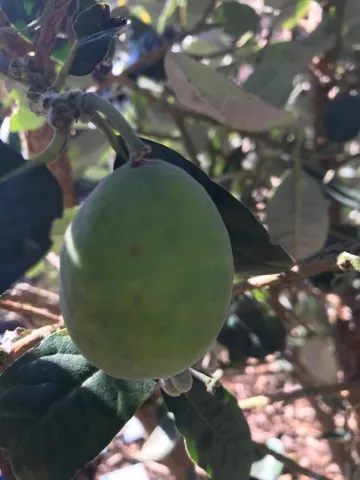Guava Trees

Guava Trees
By Andrea Peck UCCE Master Gardener
Guava Tree
Psidium guajava
Planting Area: Full Sun, USDA Zones 8-11
Size: up to 20' in height
Bloom Season: Fall
Fruit Season: Fall/Winter
Exposure: Sensitive to frost/freeze.
Pruning Needs: Yearly.
Water Needs: Medium.
The guava tree is a non-assuming plant with thick, silver-green leaves and oblong fruit. Though the guava is not a showy tree, it has an amazingly delicious fruit which is rich in Vitamin C. This tree is sensitive to frost but can grow in more temperate areas of the Central Coast as long as it is located in a protected, sunny spot. Alternatively, the guava can thrive in the right greenhouse environment.
The guava grows best in well-drained soil and once established, can tolerate some drought. It is considered a 'heavy feeder.' The young guava needs ½ pound of fertilizer every other month. Decrease fertilizing to 3-4 times a year as it becomes more mature and increase the amount of fertilizer to 2 pounds. Using a 6-6-6-2 fertilizer, spread it a foot away from the trunk, up to the drip line, and rake it in. A foliar spray of copper and zinc is recommended 3 times a year (skipping winter) for the first two years to promote healthy growth.
Prune your guava tree each year in late winter or early spring. The guava fruits on new growth. A yearly pruning will promote growth and increase fruiting. During the first year, trim the tree to establish a shape, leaving one trunk and three or four lateral branches for a classic 'tree' shape. You can also leave it to grow in bush form if you like. After the first year, trim excess growth, particularly interior branches that shade out the center of the tree---this will allow sunlight in for greater photosynthesis and promote air circulation.
When winter arrives, the quiet guava will surprise you with the most amazing fruit---you'll have to hunt for it though, this fruit tree expertly hides its treasure in silver-green camouflage.
